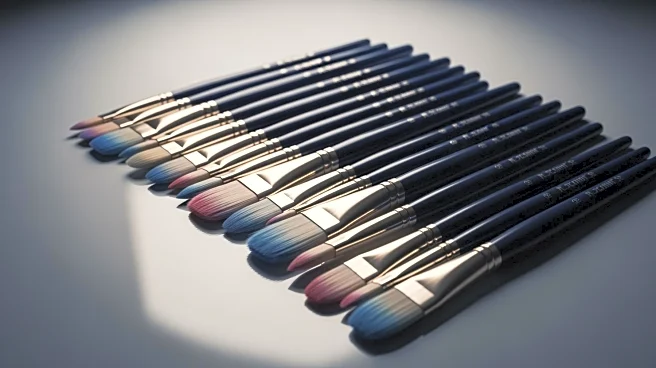What's Happening?
The FilmLight Colour Awards are bringing attention to the often overlooked craft of color grading in the film industry. Colorists, who manipulate the color of films, TV shows, and music videos to create
specific moods and visual styles, are being recognized for their contributions to storytelling. The awards, now in their fifth year, aim to give colorists the recognition they deserve, highlighting their role in enhancing the cinematic experience. Notable nominees include Adam Glasman for his work on Nosferatu and Greg Fisher for Poor Things. The awards ceremony will be held on November 16 at EnergaCAMERIMAGE in Poland.
Why It's Important?
Color grading is a crucial yet underappreciated aspect of filmmaking that significantly impacts the audience's emotional journey. By recognizing colorists through the FilmLight Colour Awards, the industry acknowledges their vital role in shaping the narrative and visual language of films. This recognition could lead to greater appreciation and understanding of the craft, potentially influencing how films are produced and perceived. As streaming and digital platforms grow, the demand for skilled colorists increases, making their work more relevant than ever.
What's Next?
The FilmLight Colour Awards aim to elevate the profile of colorists globally, potentially influencing other award bodies to create dedicated categories for color grading. As the industry evolves, colorists may find themselves adapting to new technologies and platforms, further integrating their work into the digital landscape. The awards could inspire more collaborations between directors, cinematographers, and colorists, enhancing the storytelling process and leading to more visually compelling content.
Beyond the Headlines
The recognition of colorists through awards like FilmLight could lead to a cultural shift in how audiences perceive films, appreciating the nuanced art of color grading. This could also spark discussions on the ethical and creative dimensions of color manipulation, exploring how it affects storytelling and audience perception. As the industry continues to evolve, colorists may play a more prominent role in shaping the future of cinematic experiences.











